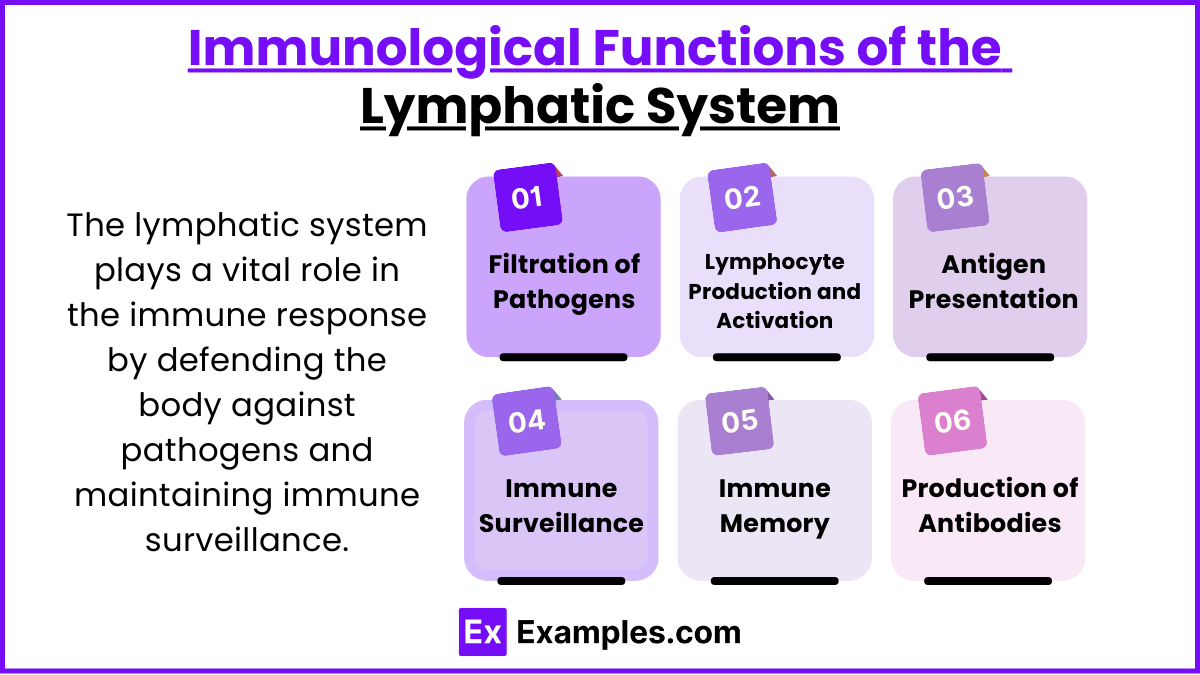Preparing for the MCAT necessitates a thorough understanding of the lymphatic system, a crucial component of the Organ Systems foundation. Mastery of lymph transport, immune responses, and the system's role in maintaining fluid balance and fat absorption provides essential insights into human health and disease, essential for a high MCAT score.
Learning Objective
In studying the "Lymphatic System" for the MCAT, you should aim to understand the anatomy and functions of lymphatic vessels, nodes, and organs such as the spleen and thymus. Learn the roles of the lymphatic system in maintaining fluid balance, lipid absorption from the digestive tract, and immunological defenses. Explore how lymphocytes (B-cells and T-cells) and other immune cells are developed, activated, and deployed. Additionally, analyze the pathophysiology of lymphatic diseases, including lymphedema and lymphatic cancers. Apply this knowledge to solve MCAT practice questions that test your ability to integrate and apply concepts related to the lymphatic and immune systems.
Anatomy and Physiology of the Lymphatic System
The lymphatic system is a crucial part of both the circulatory and immune systems. It helps maintain fluid balance, transports fats from the digestive system, and plays a central role in immune defense. Here’s a detailed look at the anatomy and physiology of the lymphatic system:
Anatomy of the Lymphatic System:
Lymph: A fluid containing water, proteins, and white blood cells.
Lymphatic Vessels: Collect and transport lymph from tissues back to the bloodstream.
Lymph Nodes: Filter lymph, trapping pathogens for destruction by lymphocytes.
Thymus: Matures T cells, a type of lymphocyte.
Spleen: Filters blood, removing old red blood cells and storing lymphocytes.
Tonsils: Protect against inhaled or ingested pathogens.
Bone Marrow: Produces lymphocytes.
Peyer’s Patches: Lymph tissue in the small intestine that detects antigens.
Physiology of the Lymphatic System:
Fluid Balance: Collects and returns excess tissue fluid to the blood.
Immune Response: Filters pathogens, activates T and B cells for immune defense.
Lipid Absorption: Absorbs fats from the digestive tract via lacteals.
Protein/Fluid Return: Returns leaked proteins and fluid to the bloodstream.
Pathogen Filtration: Lymph nodes filter pathogens and debris to prevent infection spread.
Cancer Defense: Detects cancer cells, but can also be a route for metastasis.
Immunological Functions of the Lymphatic System
The lymphatic system plays a vital role in the immune response by defending the body against pathogens and maintaining immune surveillance. Here are its key immunological functions:
1. Filtration of Pathogens
Lymph Nodes: Act as filtration sites for lymph, trapping pathogens like bacteria, viruses, and cancer cells. Inside lymph nodes, immune cells (macrophages, dendritic cells, and lymphocytes) identify and destroy these foreign invaders.
2. Lymphocyte Production and Activation
T Lymphocytes (T cells): Mature in the thymus and are essential for the adaptive immune response. They directly attack infected or cancerous cells and help regulate other immune cells.
B Lymphocytes (B cells): Produced in the bone marrow, B cells are responsible for producing antibodies that specifically target pathogens, marking them for destruction.
3. Antigen Presentation
Dendritic Cells and Macrophages: These cells capture pathogens and present their antigens to lymphocytes in lymph nodes, triggering a specific immune response.
4. Immune Surveillance
Lymph Circulation: Lymph constantly circulates through the lymph nodes, allowing immune cells to monitor for and respond to potential threats. This surveillance ensures rapid immune activation when foreign antigens are detected.
5. Immune Memory
Lymphocytes, particularly B cells and T cells, develop immunological memory after an infection or vaccination. This enables the immune system to respond more quickly and effectively to future exposures to the same pathogen.
6. Production of Antibodies
B Cells: Once activated by exposure to an antigen, B cells differentiate into plasma cells that produce specific antibodies. These antibodies circulate in the bloodstream, neutralizing pathogens and toxins.
Pathophysiology and Clinical Implications
The pathophysiology of the lymphatic system refers to the dysfunctions or abnormalities in the system that can lead to various diseases and conditions. These disorders can impair immunity, fluid balance, and the body’s ability to filter and destroy pathogens. Below are the key pathophysiological aspects and their clinical implications:
1. Lymphedema
Pathophysiology: Lymphedema occurs when there is a blockage or damage to the lymphatic vessels, leading to an accumulation of lymph in tissues. This causes swelling, most commonly in the limbs.
Clinical Implications:
Persistent swelling can lead to pain, reduced mobility, and increased risk of infections (such as cellulitis) due to impaired immune function.
Lymphedema can be a result of cancer treatments (e.g., removal of lymph nodes), infections (e.g., filariasis), or congenital conditions.
2. Lymphadenopathy
Pathophysiology: Lymphadenopathy refers to the swelling of lymph nodes, which can occur due to infections, inflammation, or malignancy.
Clinical Implications:
Enlarged lymph nodes are often a sign of infection or immune response but can also indicate more serious conditions like lymphoma (cancer of the lymphatic system) or metastatic cancer.
It often accompanies other symptoms, such as fever or localized pain.
3. Lymphoma
Pathophysiology: Lymphoma is a type of cancer that affects lymphocytes and can originate in lymph nodes or other lymphatic tissues. There are two main types: Hodgkin's lymphoma and non-Hodgkin's lymphoma.
Clinical Implications:
Symptoms include painless swelling of lymph nodes, fever, night sweats, and unexplained weight loss.
Lymphoma disrupts normal immune function, making the body more susceptible to infections.
Treatment typically involves chemotherapy, radiation, and in some cases, stem cell transplants.
4. Filariasis (Elephantiasis)
Pathophysiology: Filariasis is caused by parasitic worms (nematodes) transmitted through mosquito bites. These worms block the lymphatic vessels, leading to severe swelling, especially in the legs and genitals.
Clinical Implications:
Severe, chronic swelling and thickening of the skin (elephantiasis) can lead to disability and social stigma.
It significantly impairs lymphatic function and increases the risk of secondary infections.
5. Lymphangitis
Pathophysiology: Lymphangitis is an inflammation of the lymphatic vessels, often caused by a bacterial infection that spreads through the lymphatic system.
Clinical Implications:
It can present with red streaks on the skin, fever, and swollen lymph nodes, often requiring antibiotic treatment.
If left untreated, lymphangitis can lead to sepsis, a life-threatening condition.
6. Castleman Disease
Pathophysiology: This is a rare disorder involving the overgrowth of lymphatic tissue. It can be unicentric (affecting a single lymph node) or multicentric (involving multiple lymph nodes and organs).
Clinical Implications:
Symptoms include enlarged lymph nodes, fatigue, fever, and night sweats. Multicentric Castleman disease can compromise immune function and is associated with a higher risk of lymphoma.
Treatment may include immunotherapy, corticosteroids, or chemotherapy.
Examples
Example 1: Lymph Flow and Edema
Scenario: Post-surgical lymphedema following breast cancer surgery.
Process: Removal of axillary lymph nodes during breast cancer surgery can disrupt normal lymph drainage pathways, leading to an accumulation of lymph fluid in the arm, causing swelling known as lymphedema. This condition illustrates the importance of lymph nodes and vessels in maintaining fluid balance.
Example 2: Immune Response to Infection
Scenario: Response to a bacterial infection in the skin.
Process: Bacteria entering a cut in the skin are initially fought off by local macrophages. As macrophages become overwhelmed, they present antigens to lymphocytes in nearby lymph nodes, triggering a broader immune response including the activation of more lymphocytes which travel to the site of infection to combat the bacteria effectively.
Example 3: Formation of Lymph
Scenario: How lymph is formed during capillary fluid exchange.
Process: Blood pressure forces plasma and nutrients out of the capillaries into interstitial spaces forming interstitial fluid. Some of this fluid returns to the capillaries, but the remainder is taken up by lymph capillaries, forming lymph. This fluid is then transported back to the bloodstream via the lymphatic system, illustrating its role in fluid balance.
Example 4: Role of the Thymus in Immunity
Scenario: Thymus function in developing T-cells during early life.
Process: The thymus is active in childhood, providing an environment for precursor cells to develop into mature T-cells, which are critical for adaptive immunity. The mature T-cells are then released into circulation to perform immune functions throughout the body, demonstrating the thymus’s role in immune system development.
Example 5: Spread of Cancer Cells
Scenario: Metastasis of cancer cells through the lymphatic system.
Process: Cancer cells can break away from a tumor and enter lymphatic vessels, traveling to regional lymph nodes. Once in the lymph nodes, these cells can continue to multiply and potentially spread to other parts of the body via the lymphatic or circulatory systems, illustrating how the lymphatic system can serve as a pathway for cancer metastasis.
Practice Questions
Question 1: Functions of the Lymphatic System
What is a primary function of the lymphatic system?
A) Transport of blood proteins back to the circulatory system
B) Production of red blood cells
C) Regulation of body temperature
D) Conversion of glucose to glycogen
Correct Answer: A) Transport of blood proteins back to the circulatory system
Explanation:
The lymphatic system plays a crucial role in maintaining fluid balance within the body by transporting excess proteins and fluid from the tissues back into the circulatory system. This process helps prevent the accumulation of interstitial fluid, which could lead to edema.
Question 2: Lymph Nodes
What is the primary function of lymph nodes in the lymphatic system?
A) Production of hormones that regulate other organs
B) Filtration of lymph to remove pathogens and debris
C) Storage of red blood cells and platelets
D) Synthesis of vitamin D
Correct Answer: B) Filtration of lymph to remove pathogens and debris
Explanation:
Lymph nodes serve as filters for the lymph fluid, removing pathogens, cancer cells, and debris before the fluid is returned to the bloodstream. This filtration process is essential for the immune response, as lymph nodes also house immune cells that can respond to pathogens captured in the lymph.
Question 3: Lymphedema
What is lymphedema most commonly associated with?
A) Overproduction of lymph fluid
B) Infection of lymph nodes
C) Obstruction or damage to lymphatic vessels
D) Genetic absence of lymph nodes
Correct Answer: C) Obstruction or damage to lymphatic vessels
Explanation:
Lymphedema is typically caused by the obstruction or damage to the lymphatic vessels, which prevents lymph from draining properly. This condition often occurs after lymph node dissection surgeries or radiation therapy, which can damage parts of the lymphatic system, leading to swelling in the affected areas.





